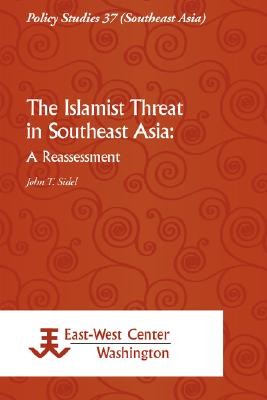
- We will send in 10–14 business days.
- Author: John Sidel
- Publisher: ISEAS-Yusof Ishak Institute
- Year: 2007
- ISBN-10: 9812304894
- ISBN-13: 9789812304896
- Format: 15.2 x 22.9 x 0.5 cm, minkšti viršeliai
- Language: English
- SAVE -10% with code: EXTRA
Reviews
Description
In recent years, a steady stream of reportage and commentary has spotlighted a dangerous "Islamist threat" in Southeast Asia. This study, by contrast, offers a very different account. In descriptive terms, this study suggests that such an alarmist picture is highly overdrawn, and it traces instead a pattern of marked decline, demobilization, and disentanglement from state power in recent years for Islamist forces in Southeast Asia. This trend is evident both in the disappointments experienced in recent years by previously ascendant Islamist forces in Indonesia and Malaysia, and in the diminished position of Muslim power brokers in southern Thailand and the Philippines after more than a decade of cooperation with non-Muslim politicians in Manila and Bangkok. In explanatory terms, moreover, this study shows the significance of social and political context. A fuller appreciation of aggression by anti-Islamists and non-Muslims, and of the insecurity, weakness, and fractiousness of Islamist forces themselves, helps to explain the nature, extent, and limitations of Islamist violence, aggression, and assertiveness. This overarching alternative framework not only provides a very different explanation for the "Islamist threat" in Southeast Asia, but also suggests very different policy implications from those offered by specialists on terrorism working on the region.
EXTRA 10 % discount with code: EXTRA
The promotion ends in 22d.17:02:10
The discount code is valid when purchasing from 10 €. Discounts do not stack.
- Author: John Sidel
- Publisher: ISEAS-Yusof Ishak Institute
- Year: 2007
- ISBN-10: 9812304894
- ISBN-13: 9789812304896
- Format: 15.2 x 22.9 x 0.5 cm, minkšti viršeliai
- Language: English English
In recent years, a steady stream of reportage and commentary has spotlighted a dangerous "Islamist threat" in Southeast Asia. This study, by contrast, offers a very different account. In descriptive terms, this study suggests that such an alarmist picture is highly overdrawn, and it traces instead a pattern of marked decline, demobilization, and disentanglement from state power in recent years for Islamist forces in Southeast Asia. This trend is evident both in the disappointments experienced in recent years by previously ascendant Islamist forces in Indonesia and Malaysia, and in the diminished position of Muslim power brokers in southern Thailand and the Philippines after more than a decade of cooperation with non-Muslim politicians in Manila and Bangkok. In explanatory terms, moreover, this study shows the significance of social and political context. A fuller appreciation of aggression by anti-Islamists and non-Muslims, and of the insecurity, weakness, and fractiousness of Islamist forces themselves, helps to explain the nature, extent, and limitations of Islamist violence, aggression, and assertiveness. This overarching alternative framework not only provides a very different explanation for the "Islamist threat" in Southeast Asia, but also suggests very different policy implications from those offered by specialists on terrorism working on the region.


Reviews